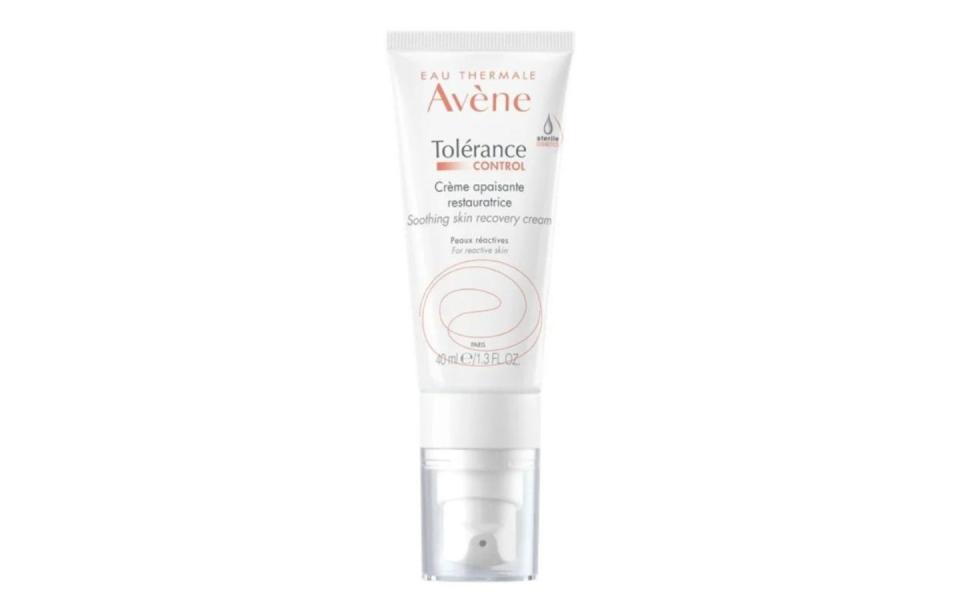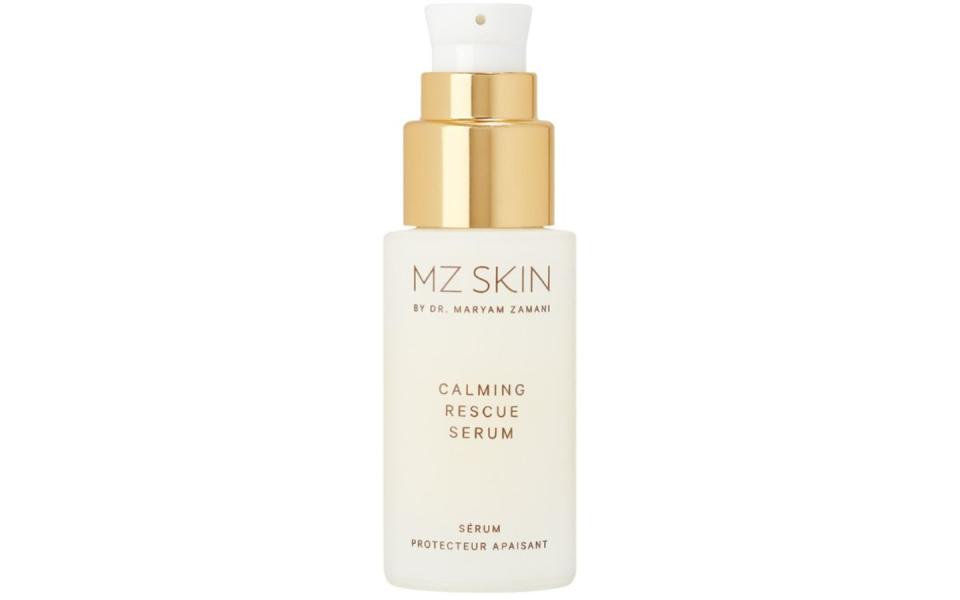Why you might have your skincare routine completely wrong – and what to do about it

Sceptical minds would call it a marketing ploy to sell yet more products to anxious consumers searching for perfect skin. But there’s a practical explanation for the current rise in “calming” skincare products. It’s one dermatologists have been reporting since the pandemic, when the time-poor among us had a rare opportunity to pamper ourselves, leading to a trend for layering powerful products.
Consultant dermatologist Emma Craythorne says DIY skincare can be problematic. “There’s been a massive interest in skin health but this has led to people overusing active ingredients without a proper skin assessment and prescriptive routine. ”
That’s not to say that we shouldn’t take our skin into our own hands, but, says Craythorne, using the wrong skincare can lead to inflammatory skin conditions like perioral dermatitis (red acne-like bumps and dryness around the nose and mouth).
Are you engaging in active ingredient overload?
Whereas active skincare was formerly the domain of dermatologists or aestheticians who have a deep understanding of which active ingredients should be used for which types of skin concerns, nowadays actives are commonplace in over-the-counter serums, leaving the consumer in charge of their own routines.
Active ingredients are compounds or chemicals that have a biological effect on the skin. They are called “actives” because they are able to prevent, heal or improve a specific condition and though they must be regulated and indicated on the product’s label, this doesn’t prevent the user from layering multiple actives that could inadvertently upset the skin’s protective barrier leading to sensitivity.
AHAs (alpha hydroxy acids), glycolic acid and retinoids are just some of the active ingredients that have seen a rise in popularity. There’s nothing wrong with these ingredients per se; each has its role in helping to keep skin bright and clear in spite of the ageing process. But when you layer multiple chemicals without prescriptive expert advice there’s a risk of compromising the skin barrier - a vital lipid shield that keeps hydration in and irritants out.
“These neurochemicals are designed to give skin a glow but in many cases, they achieve this by taking off the stratum corneum (outermost layer),” says Craythorne, adding: “the issue is that they’re in almost everything nowadays. So, when you are using a multi-layered skincare routine you’re adding a dribble of this, a dribble of that, without necessarily knowing how each of these chemicals are going to interact with one another.”
Cause no harm
If your skin is uncharacteristically sensitive, start by taking everything away, suggests Craythorne. “The first first step is zero therapy. In other words, don’t put anything on your skin at all, unless it’s moisturiser, and even then it has to be super light – heavy oils or creams will only make it worse.” If your skin improves it’s wise at this point to reconsider your existing skincare routine.
The best way to ascertain what your skin actually needs is to see a dermatologist or skin expert who can prescribe a bespoke regime and monitor your progress. There are various online platforms now that offer consultations over video calls which may be more convenient and cost effective for those who don’t have access to Harley Street doctors.
Platforms like Skin + Me, Get Harley, and Klira offer private consultations with a dermatologist who will prescribe a plan for your specific skin concerns. Whereas skincare brand Coats provides a free DM-a-Derm advice service aimed at younger consumers through their Snapchat channel @coats_skin where your skin questions will be answered within 24 hours.
Cleanse don’t strip
Step one is to choose the right cleanser to avoid stripping the skin in the first place. Craythorne likes Cetaphil’s range of cleansers which are PH balanced and gentle. “Plus they’ve got added ingredients like glycerin, ceramides and niacinamide that are good for the skin barrier,” she adds. More generally look for PH-balanced, hypoallergenic, non-comedogenic, dermatologically-tested labels and steer away from harsh detergents, alcohol and fragrances that can be stripped and leave skin feeling tight.
The best moisturisers contain these ingredients
Something as simple as using the wrong moisturiser or cleanser can cause inflammation. Craythorne says not everyone needs a moisturiser particularly if your skin is oily but if you’ve been stripping your skin you may need to replenish its lubricating lipids and restore the skin’s optimal PH.
Our skin barrier is often compared to a brick wall, the bricks being corneocytes that are mostly made up of keratin. The rest comprises ceramides, cholesterol and free fatty acids which act as lubricating mortar between the bricks. When you strip these lipids away you’re in effect creating gaps or escape routes where moisture leaks out and pollutants can get in, which can lead to inflammation (aka sensitivity) that manifests in anything from redness and dry patches to adult acne and pigmentation.
While there may be merit in using chemical exfoliants to encourage cell turnover, a natural shedding process that becomes sluggish with age, it’s important to reinstate what you’ve taken away. Often barrier creams targeted at calming irritation are occlusive – vaseline or aquaphor for example – meaning they form a protective film that locks moisture in.
But studies show that the ideal moisturiser contains a combination of occlusives (lanolin, shea butter and petrolatum), emollients like ceramides and squalane, and humectants (hyaluronic acid and glycerin). Other ingredients that strengthen the skin barrier include niacinamide, panthenol and oat beta glucan, the key ingredient in Aveeno, a range famously known for treating sensitive skin.
6 of the best calming skincare products

Augustinus Bader’s The Skin Infusion £330: Expensive, absolutely, but this refillable cream is designed as a one-off skin treatment to reset sensitivity.

Cetaphil soothing foam wash for normal to dry sensitive skin £12.49: The opposite of stripping, this cloud-like cleanser leaves skin satiny soft and glisteny.

Skinceuticals Triple Lipid Restore £140: This has been created to mimic the skin’s natural make-up with a combination of ceramides, natural cholesterol and fatty acids.

Tata Harper Superkind Calming Creme £107: Hypoallergenic and alcohol-free, this contains anti-inflammatory ingredients like Tahitian Golden Microalgae to support and soothe the skin barrier.

Avène Tolérance Soothing Skin Recovery Cream £16.78: Helps to calm and soothe an irritated skin barrier for under £20.

MZ Skin The Calming rescue serum £125: Deeply moisturising and redness reducing, this soothing serum contains vitamin D3 to protect skin from free radicals.


